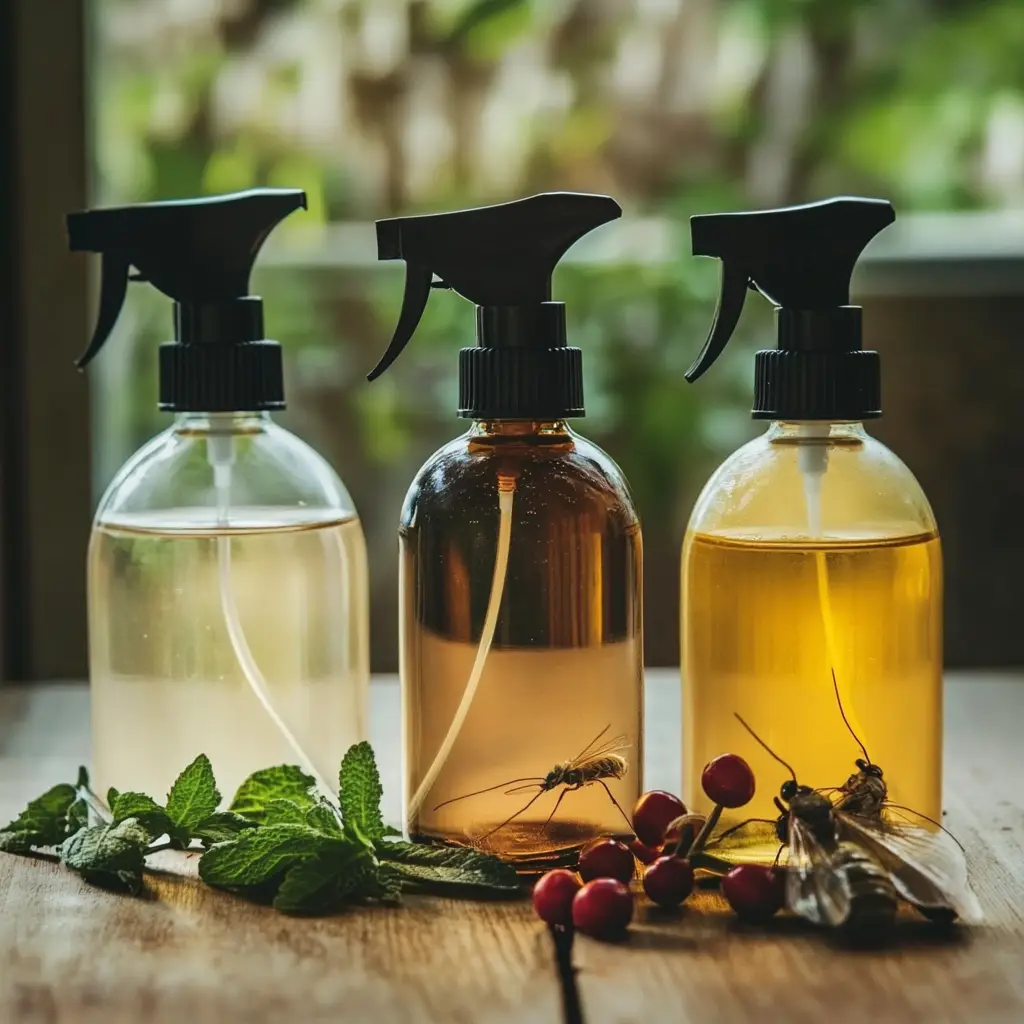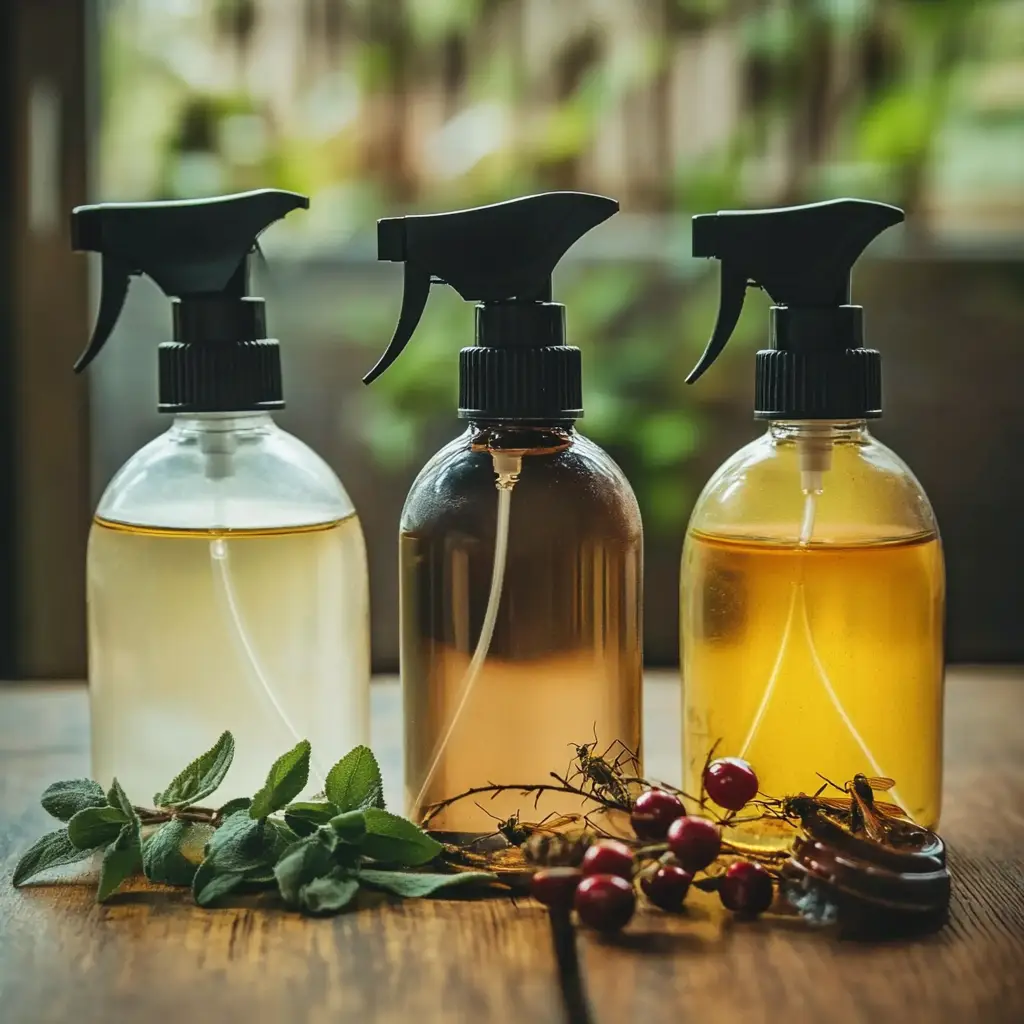Tired of sharing your home with uninvited insect guests? From ants trailing across your kitchen counters to cockroaches hiding under the fridge, bed bugs lurking in the mattress, and mosquitoes buzzing in your ears at night—these pests are not just annoying, they can be harmful to your health and well-being.
Commercial insect repellents often contain toxic chemicals like DEET, permethrin, or synthetic pyrethroids. While these products may be effective, they come with drawbacks: harmful fumes, environmental impact, and risks to children and pets. Fortunately, natural solutions exist—and many are already in your kitchen.
In this guide, we’ll show you how to make four highly effective, non-toxic insect sprays that target common household bugs. Using simple, affordable ingredients, these DIY formulas are safe, eco-friendly, and just as potent when used correctly. Let’s dive into how to make your home pest-free—naturally.
Why Go Natural? The Benefits of DIY Insect Sprays
Before we get into the recipes, let’s look at why so many people are switching to homemade, natural alternatives:
✅ 1. Safe for Families and Pets
Most commercial sprays warn against skin contact or inhalation. Natural sprays using ingredients like vinegar, cinnamon, and essential oils are much gentler and safer to use around your loved ones.
✅ 2. Environmentally Friendly
DIY sprays contain no synthetic toxins or aerosols. They’re biodegradable and don’t contaminate indoor air or local ecosystems.
✅ 3. Budget-Friendly
Forget overpriced products filled with chemicals. A bottle of vinegar, a few essential oils, and kitchen staples can create several batches of effective insect spray for a fraction of the cost.
✅ 4. Customizable and Pleasant-Smelling
You control the scent and intensity of these sprays. Want a citrusy ant repellent? Add lemon oil. Prefer a woody aroma? Use clove or cedarwood.

DIY Ant Spray Recipe
Ants are tiny but persistent. They travel in lines, following scent trails left by scout ants, which is why you often see long chains of them heading to a crumb.
Ingredients:
-
1 cup water
-
1 cup white vinegar
-
1 teaspoon ground cinnamon (or 5 drops cinnamon essential oil)
Instructions:
-
Mix equal parts vinegar and water in a spray bottle.
-
Add cinnamon powder or oil.
-
Shake well before use.
-
Spray generously along:
-
Baseboards
-
Entry points (doors, windows)
-
Kitchen counters and under appliances
-
Around sugar jars or pet food areas
-
Why It Works:
-
Vinegar disrupts ants’ scent trails and confuses the colony.
-
Cinnamon acts as a strong deterrent due to its pungent smell and essential oil properties.
Pro Tip:
Repeat the spray daily in affected areas. Keep surfaces clean to avoid attracting new ants.
DIY Cockroach Spray Recipe
Cockroaches thrive in warm, dark, damp places and can spread disease. They’re incredibly resilient—but they hate certain natural ingredients.
Ingredients:
-
1 cup white vinegar
-
1 teaspoon borax powder
-
5 drops clove oil or 1/4 teaspoon ground clove
Instructions:
-
Combine vinegar and borax in a spray bottle. Shake to dissolve.
-
Add clove oil or powder.
-
Shake well before use.
-
Spray in:
-
Cracks and crevices
-
Under sinks
-
Behind stoves and refrigerators
-
Around garbage bins
-
Why It Works:
-
Borax disrupts the digestive system of cockroaches and kills them slowly.
-
Clove oil contains eugenol, a compound toxic to cockroaches and other insects.
-
Vinegar breaks down their protective waxy coating.
Safety Note:
Keep away from food-prep areas and ensure pets don’t lick sprayed surfaces.

DIY Bed Bug Spray Recipe
Bed bugs are nocturnal parasites that feed on blood and hide in mattress seams, bed frames, and furniture. Once they spread, they’re hard to eliminate—but this spray helps control the problem.
Ingredients:
-
1 cup water
-
1 tablespoon food-grade diatomaceous earth (DE)
Instructions:
-
Pour water and DE into a spray bottle.
-
Shake vigorously (it settles quickly).
-
Lightly mist:
-
Mattress seams
-
Headboards and bed frames
-
Cracks and corners around the bedroom
-
Why It Works:
-
Diatomaceous earth is made of fossilized algae. Its microscopic particles puncture insect exoskeletons, causing dehydration and death.
-
Bed bugs cannot develop resistance to it.
Important Tips:
-
Avoid breathing in the fine powder—wear a mask while spraying.
-
Let surfaces dry completely before making the bed.
-
Use daily for 2–3 weeks in infested areas.
DIY Mosquito Spray Recipe
Mosquitoes are more than just a nuisance; they’re vectors for diseases like dengue and malaria. But you don’t need toxic bug sprays to keep them away.
Ingredients:
-
1 cup water
-
10 drops lemongrass essential oil
-
10 drops citronella essential oil
Instructions:
-
Add oils to the water in a spray bottle.
-
Shake thoroughly before each use.
-
Spray around:
-
Windows and doors
-
Curtains
-
Light fixtures (where mosquitoes are drawn)
-
Outdoor patios and balconies
-
Why It Works:
-
Citronella and lemongrass oils mask scents that attract mosquitoes, such as body heat and sweat.
-
Their sharp scent is unpleasant to most insects.
Bonus:
This spray smells fresh and clean—perfect for indoor or outdoor use.
General Tips for Using Natural Insect Sprays
To maximize the effectiveness of these sprays:
1. Apply Regularly
Natural sprays are less long-lasting than chemical ones. Reapply daily or after cleaning affected surfaces.
2. Combine with Good Hygiene
-
Sweep and mop floors often
-
Store food in airtight containers
-
Fix leaky pipes and eliminate standing water
-
Seal entry points like door gaps and window cracks
3. Use as a Preventive Measure
Don’t wait until bugs appear. Spray weekly in known problem areas to prevent infestations before they begin.
Frequently Asked Questions (FAQs)
Q1: Can I use these sprays around kids and pets?
Yes—with precautions. Avoid direct spraying where children play or where pets might lick surfaces. Essential oils should be used in diluted forms and always stored securely.
Q2: What’s the shelf life of these DIY sprays?
Most can last 1–2 weeks at room temperature. For longer shelf life, store them in the fridge and use within 3–4 weeks.
Q3: What’s the difference between food-grade and pool-grade diatomaceous earth?
Only use food-grade DE for indoor sprays. Pool-grade DE contains chemical additives and is dangerous to inhale or ingest.
Q4: Can I mix different oils in one spray?
Yes! Feel free to experiment. Lavender, tea tree, peppermint, eucalyptus, and cedarwood also repel many insects.
Q5: How long until I see results?
It varies. Ants and mosquitoes may disappear within 1–2 days, while cockroaches and bed bugs may take 1–2 weeks of consistent application.
Variations and Advanced Add-Ins
Want to upgrade your sprays? Here are some optional add-ins:
-
Rubbing alcohol (for faster drying)
-
Castile soap (helps oils emulsify)
-
Baking soda (for odor control)
-
Neem oil (another powerful insecticide)
Science Behind the Ingredients
-
Vinegar: Its acetic acid content destroys insect scent trails and irritates their bodies.
-
Borax: When ingested by bugs, it disrupts their gut lining and metabolism.
-
Essential oils: Their potent volatile compounds overload insect sensory systems.
-
Diatomaceous earth: A mechanical killer—dry, sharp, and chemical-free.
Conclusion
It’s time to stop depending on toxic bug sprays and start using the powerful, natural remedies already in your kitchen.
Whether you’re battling ants in your pantry, cockroaches in your bathroom, bed bugs in your mattress, or mosquitoes outside your door, these four DIY insect sprays provide an effective, affordable, and eco-conscious solution.
So grab a spray bottle, mix up a batch, and take back your space—naturally.


